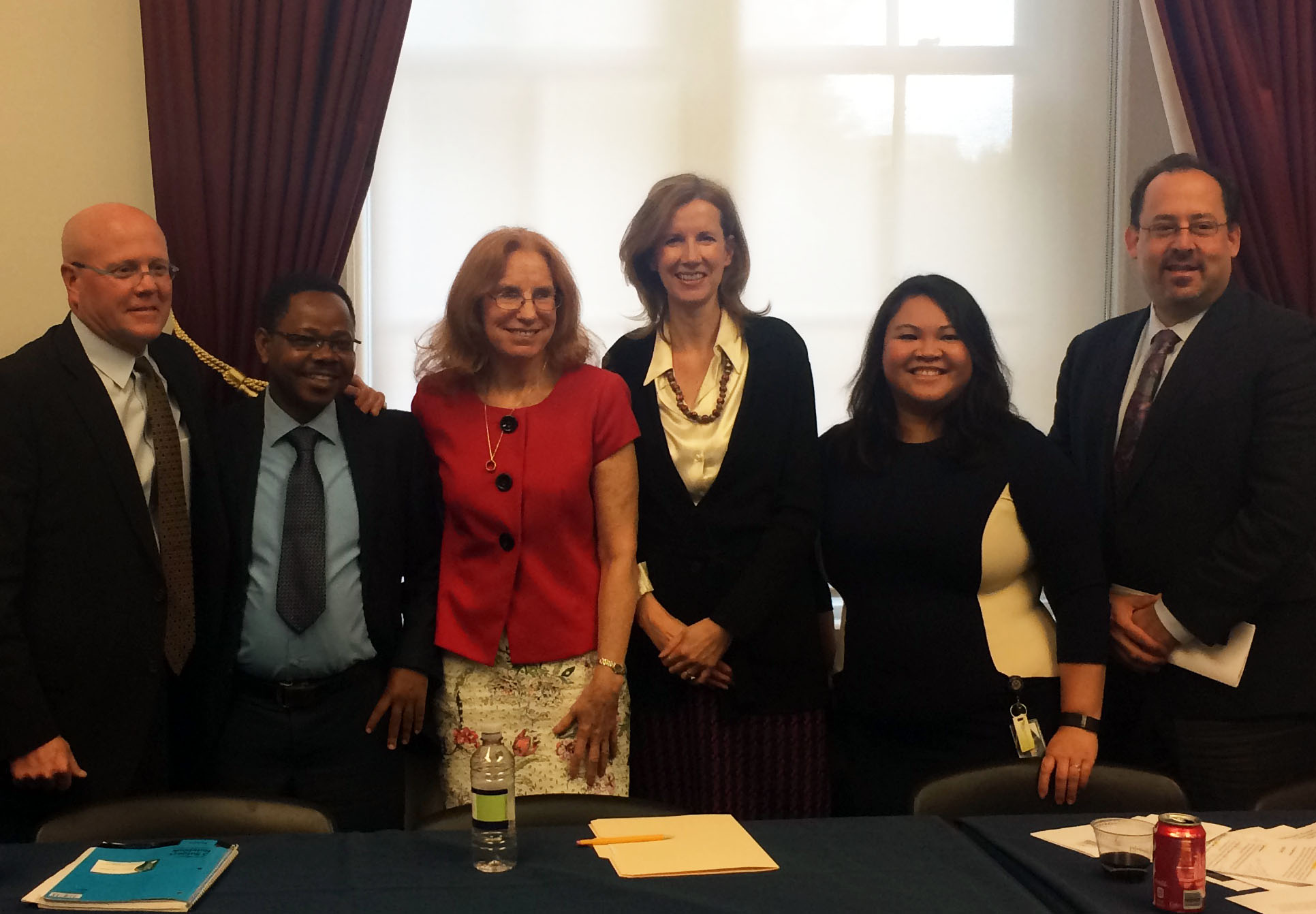Capitol Hill Briefing in Partnership with the Congressional HIV/AIDS Caucus

On April 27 on Capitol Hill, experts from U.S. Liaison Office for The Joint United Nations Program on HIV/AIDS (UNAIDS) and the Office of the Global AIDS Coordinator joined EGPAF and the Congressional HIV/AIDS Caucus at an educational briefing about children in the global AIDS epidemic. Congressional staff and others came to learn about the impact of HIV and AIDS on children and how U.S. funded efforts are helping to reduce that burden.
Moderated by Lisa Carty, Director of UNAIDS, speakers included Lynne Mofenson, M.D., Senior Technical Advisor at EGPAF; Titus Syengo, Regional Director for Program Implementation at EGPAF; Dr. Paul Zeitz Senior Advisor, Strategy, Office of the Global AIDS Coordinator and Health Diplomacy, U.S. Department of State; and Monica Pham, Senior Advisor for Representative Barbara Lee.
Panelists discussed the remarkable gains made against pediatric AIDS, in large part due to political commitments by Congress and the U.S. Government—but also the work needed to be done to truly end infections in children. As Charles Lyons, EGPAF’s President and CEO noted in welcoming remarks, progress does not equal success and “the 50 yard line cannot become the end-zone.”
Dr. Mofenson gave a comprehensive overview of the science around pediatric AIDS. She walked through the steps it takes to prevent transmission of HIV between mother and child, and how we now know how to reduce transmission to below 5 percent in resource poor settings. One interesting point that Dr. Mofenson made is the lack of antenatal care (more commonly known in the U.S. as prenatal care) visits women in sub-Saharan Africa are making. Getting pregnant women to the clinic earlier and more often is one way to reduce new infections in children—but more research is needed to understand how to get them in the door and utilizing HIV services.
Mr. Syengo brought his experience fighting HIV/AIDS in Kenya to the room, providing attendees a first-hand perspective about the realities of serving people in the field. He spoke of a woman in Homa Bay, Kenya, where one in four people are HIV positive. This woman had no idea her first husband was dying of AIDS until after he passed away and she (and one of her children) were diagnosed with HIV. All of her subsequent children were born HIV negative due to access to prevention of mother-to-child transmission (PMTCT) services. Mr. Syengo also talked about how her HIV positive child faced discrimination in school because teachers did not believe he was sick (thanks to the antiretroviral medicines keeping him healthy). Luckily they were able to find a school where teachers were sensitized to children with HIV where he is much happier (though traveling further from home).
Lastly, Dr. Zeitz spoke to the exciting advancements the President’s Emergency Plan for AIDS Relief (PEPFAR) is making towards reaching children impacted by the AIDS epidemic. This includes the incredibly important ACT Initiative which aims to double the number of children on treatment in 2 years in 10 countries. PEPFAR’s leadership, along with UNAIDS has been the largest contributing factor to the over 50 percent reduction in new infections in children since 2001. Dr. Zeitz also noted that continued commitments, especially to reducing new infections in young girls, will be critical to reaching the goal of ending new infections in children.
These speakers all reinforced that reaching women and children remains crucial—we need to go beyond the “low hanging fruit” and focus on research, community outreach, stigma reduction, and programmatic scale up that will eventually end AIDS in children once and for all.
Katie Coester
General


